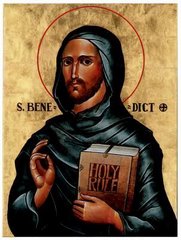Premise and Objectives
The Eucharistic celebration that we have as the Ordinary form today is misconceived to be merely a product of the second Vatican Council, an invention concocted by a small group of people including Pope Paul VI of happy memory. This misconception has been fueled by those who (rabidly) support the Tridentine Mass. It is even shocking to Christian sensibility that people resorted to namecalling and false accusation in attacking the reform, referring the Paul VI mass as the Mass of the devil and falsely identifying the late Archbishop Annibale Bugnini of being a mason. Were these so-called Traditionalist correct? Was the post-Vatican II Mass really just an invention of Bugnini et. Al.? Is the Tridentine Mass the Mass of the Church since its beginning?The Mass as we know it has a long history and a long process of evolution. The Liturgy of the Church of Rome has a colorful history. And it has a cycle – a cycle of celebration, accumulation of rites and then a reform, then going back to the celebration. The Tridentine Rite of the Mass is one of the products of this cycle. Those who made it wanted to return to the tradition of the Fathers, just like the earlier Gregorian reform, and this is the same goal of the Vatican II reformers. But the situation then was different from that of the Second Vatican Council. Theirs was to support the Counter-Reformation and defend the Tradition of the Church, whereas the Second Vatican Council wanted to reach out to the faithful of the modern world. And what was needed to return to the tradition of the Fathers such as old manuscripts, codices, missals, ordines and documents, is more available during the past century than during their time. Progress in archeology, finding important treasures of liturgical history, these things happened only in the last 200 years. The reformers of Trent did not have access to what we have today. The Post-Vatican II Mass, contrary to Traditionalist views, is more similar to the Classical Roman Liturgy. It can be considered as the fulfillment of the Trent reformers’ desire to have the Mass they were reforming as celebrated by the Fathers of the Roman Church.
How was the classical roman form of the Mass celebrated? How did the reformers go back to this? To what extent did they return to this? How did this reformed liturgy manifest the other reforms of the Second Vatican Council in areas such as theology and ecclesiology?
In this thesis, I will show how the reform of Vatican II was able to achieve going back to the Classical Roman Liturgy and how this form of the celebration affects the faith of each Christian and how we are as a Christian community, and that what was achieved in the reform of the liturgy, that is going back to the liturgical tradition of the Fathers also helped us go back somehow to how the Church was in the time of the Fathers.
Sidenote (I dont know where to put this). During the time of the Fathers, and even before that – Christians did not separate the profane from the divine. Their life here on earth, their bodies, their worship experience, was of this world and yet transfigured into the sacred. They did not fall in awe of the mystery – they lived in this mystery. The Mystery of God for them is something they can touch for their baptism made them a new creation, sharing in the life of Christ. We find it difficult today because we are so convoluted, that is why there are people who find the mystery something we can only see from the other side of the communion rail, something we shouldn’t touch nor eat because we are dirty. The early Christians had none of that. They knew that communion in Christ’s body meant that they actually commune with other people. They are not individualistic and merely going to church to see the host without actually communicating with each other in the church. God is manifest for them, not only in the sacrament but in their fellow Church members.
Bibliography
1. Ordo Romanus Primus
2. Sacramentarium Gelasianum Vetus
3. Sacramentarium Gregorianum
4. History of the Liturgy
5. Mass (Jungmann)
6. The Celebration of the Eucharist (Mazza)
7. Reform of the Liturgy (Bugnini)
8. Introduzione alla Storia della Liturgia Occidentale (Cattaneo)
9. Medieval Liturgy (Vogel)
10. Mass of the Roman Rite (Jungmann)
11. Handbook for Liturgical Studies (ed. Chupungco)
12. Anamnesis
13. L'Eglise en Priere (ed. Martimort)
14. Springtime in the Liturgy (Deiss)
15. MR 1975
16. MR 2000
Outline:
I. Introduction
II. The Classical Roman Form of the Eucharistic Celebration
A. Order of the Mass
B. Participation of the People of God
C. Ecclesiology Produced
III. Reform of the Second Vatican Council
A. Order of the Mass
B. Particiaption of the People of God
C. Ecclesiology on Vatican II
IV. Comparison of the Trent Reform and the Vatican II Reform
V. Implications
VI. Pastoral Notes

1 commento:
Interesting thesis. But you left out a vital author in your biblio: Ratzinger.
I'm curious to see your elaboration your thesis. Perhaps you could serialize it on your blog. Plus do visit The New Liturgical Movement Blog. Lots of resources there too.
Posta un commento